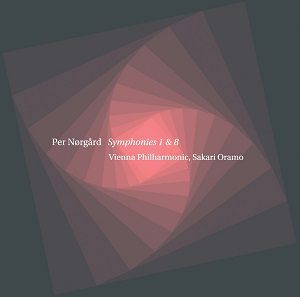
Per Nørgard Symphonies Nordic Masterpieces
By Ralph Graves
Sakari Oramo has paired Per Nørgård’s first symphony (1953) and his most recent symphony (2011) together, creating an interesting study in contrasts. To my ears, there’s a certain Nordic quality to both works. Although the 8th is more dissonant and not as tonal in structure, neither work falls neatly into the post-romantic or atonal categories. Like Sibelius, Nørgård has charted his own path and created his own musical language that draws somewhat from both camps.
Nørgård greatly admired Sibelius. He corresponded with the older composer, shared some scores with him, and dedicated his first quintet to Sibelius (with permission). The Symphony No. 1 suggests that Nørgård is indeed one of the heirs of Sibelius’ ascetic.
The work has an icy coolness to it, mostly due to Nørgård ‘s orchestration. His string writing, particularly, seems to favor the treble, giving it somewhat of an edge. The subtitle, “Sinfonia Austera,” puts the listener on notice, and Nørgård indeed delivers an austere work that nonetheless is quite moving in parts (particularly the slow movement).
Nørgård’s 8th Symphony is the work of a mature composer thoroughly in command of his materials. Like the first, it doesn’t necessarily fit into the current compositional schools. Instead, Nørgård constructs his own sonic world that sounds contemporary without being trendy. The glittering chromaticism and unusual instrumentation make it a work both in and out of its time. If you purchase the SACD of this release, be sure to play it through an SACD player — the greater detail I heard made a significant difference in the impact this symphony had on me.
Per Nørgård is well-regarded throughout Scandinavia. Perhaps this recording will help spread his reputation even further.
Per Nørgård: Symphony No. 1, Op. 13 “Sinfonia Austera”; Symphony No. 8
Vienna Phiharmonic Orchestra; Sakari Oramo, conductor
Dacapo SACD

